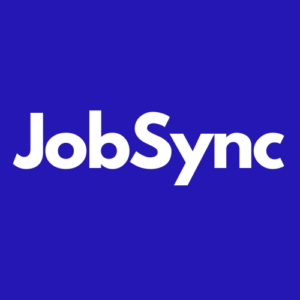
Clear definitions, policies, and procedures are critical for promoting transparency and trust in talent acquisition. TA leaders share practical solutions for identifying and managing potential conflicts in this second installment of our two-part Conflicts of Interest series.
In all their forms, conflicts of interest are a top concern for talent professionals. In our last post, we explored the size of the problem (big!) and the stakes for organizations that receive potentially biased recommendations.
However, understanding the problem is only the first step. During the panel discussions that JobSync and our friends at CareerXroads convened, we also asked the experts to share practical recommendations for addressing conflicts of interest within our industry.
While the panelists offered a range of opinions, they agreed on one fundamental point: transparency is about showing all of your cards. The following are some possible strategies for putting this into practice, and encouraging (or perhaps compelling) your ecosystems to do the same.
1. Include conflict of interest disclosures in procurement processes.
The majority of talent leaders want to know if, and how much, money is changing hands between solution providers, agencies and consultants when a deal is made. Is it a referral fee? A finder’s fee? A retainer, stock options, seat on the board?
While you could ask a direct question and hope for a direct answer, 80% of our experts said the best way to elicit such information is to include full disclosure requirements in RFI/RFPs. Michelle Meehan, VP of Marketing Plum, pointed out that you can’t expect vendors to govern themselves: “We need to educate the buyers. That is what is missing. How to buy the technology. What to consider. How to weigh the possibilities and the information gathered by experts in the space.”
Procurement teams may be unfamiliar with conflicts of interest in TA, so talent leaders need to offer guidance. CareerXroad’s Vendor Disclosure Rider, developed with the help of our expert panel and available here, includes essential questions to ask vendors regarding their financial relationships. Adopting a standard form like this adds a layer of transparency and ensures that smaller suppliers are not at an unfair disadvantage.
2. Create standardized policy templates for vendors.
The panelists agreed that drafting clear, consistent policies on matters such as data processing and handling, privacy, security, and conflicts of interest is key to aligning vendors around industry best practices. Appending those policies to your vendor contracts ensures that failure to follow them could be considered a breach of contract. At the very least, vendors will be forced to disclose at the procurement stage how their practices do not align with yours.
One valuable policy that’s often overlooked is a whistleblower policy. This allows for anonymous reporting of favoritism, financial benefits, and divided loyalties so that issues can be reported without fear of retaliation.
3. Require conflict of interest statements from speakers and publishers.
Sponsored content should contain a clear conflict of interest statement laying out any paid relationships to the products or services being discussed. Our panelists were in favor of a belt-and-braces approach to such disclosures: most wanted to see a combination of visible disclaimers, verbal and written confirmations of conflicts (e.g., slides in a speaker deck), and specific tags or labels used on websites and social media.
Jeanette Leeds, High Volume EVP at Hourly by AMS, shared, “When conferences, analysts, or influencers clearly disclose their sponsorships or who’s footing the bill, it sends a powerful message: THERE IS NOTHING TO HIDE!” And that’s HUGE for credibility. I’d go so far as to say it’s the ultimate play in credibility and trustworthiness.”
Conference organizers can also drive change by implementing proper selection methods for speaking slots. It’s fine to cherry-pick speakers who are key in their areas as long as there are clear disclosures of financial interests and bias is removed from the selection process. Publishing the speaker selection methodologies sends a powerful message that transparency is valued.
4. Audit referral programs for diversity
Employee referral programs (ERPs) offer a powerful strategy to enhance recruitment efforts and cut the costs and time associated with hiring. The risk is that they reward favoritism, which can lead to homogeneous hiring if employees primarily refer candidates similar to themselves.
Excluding individuals who are directly involved in the hiring process from eligibility for referral bonuses is an obvious step to take. Our panelists also urged companies to assess all candidates against the same objective criteria, regardless of how they are sourced.
Regular ERP audits can help identify any biases, inconsistencies, endorsements, or lack of integrity in the process. As CareerXroad’s founder Gerry Crispin pointed out, “Referral programs must be audited for diversity to ensure a fair selection process. Referrals from friends and family, especially from C-level employees, can discourage both recruiters and candidates and may hinder the hiring of underrepresented individuals.”
5. Embrace technology for transparency
As with many aspects of talent acquisition, technology can significantly promote transparency and manage conflicts of interest. While Artificial Intelligence was not the focus of this panel discussion, we recognize that AI will increasingly have value as a transparency-enhancing tool.
For example, AI-powered resume parsing and assessment intelligence platforms allow talent teams to identify skills, soft skills, and cultural fit without direct human intervention. They can promote fair and unbiased decision-making as part of a standardized hiring and selection process.
6. Talk openly about conflicts of interest
Both individually and collectively, talent acquisition professionals must have the courage to discuss conflicts of interest openly. This means asking consultants and solution partners about their relationships, partnerships, and financial arrangements with vendors. It means sharing your concerns and expectations regarding conflicts of interest in vendor relationships with peers and industry associations.
When asked, “What are the biggest hurdles to achieving greater transparency within the HR industry?”, a whopping 60% of our research respondents said resistance from within the organization or industry was the top factor. Addressing conflicts of interest is as much about overcoming resistance to change as implementing new policies and procedures.
The solution to change resistance is getting people to participate in making the change. Bring the topic up early, often, and loudly, and make themes of transparency and integrity a rallying cry for your organization.
7. Measure success
Talent acquisition is a metrics-driven space, so it’s no surprise that our panel emphasized the importance of measurement factors when defining standards of transparency. Key metrics could include:
- Volume of disclosure statements in presentations and briefings.
- Diversity statistics in employee referral programs.
- Incidents reported through whistleblower policies.
- Procurement compliance rates.
- Feedback from employees, candidates, and external stakeholders on perceived transparency of the talent acquisition process.
Seeing metrics move in the right direction is a great way to build momentum for transparency efforts. As Mark Stelzner, founder of IA, put it, “…the reason we don’t see the transparency we desire is because of perception. Like any other challenge in communications and leadership, we need demonstrable reference examples to show all parties that transparency is a reward, not a restriction.”
Success measurement can serve as a demonstrable example. And if things don’t go as planned, measuring and sharing those results can help identify areas for improvement and enhance accountability for all stakeholders involved.
Transparency is currency
Conflicts of interest are rife in talent organizations and they cost more than you may realize. As an industry, we pay the price of nondisclosure in bad decisions, in wasted time, in hidden costs and poor recruitment outcomes.
Clearly, addressing conflicts of interest in talent acquisition requires a multi-pronged approach involving both individual and collective action. Our hope for this research is that it starts the conversation. Transparency is a currency in today’s talent organizations. It’s through open dialogue and collective action that we can drive positive change.


